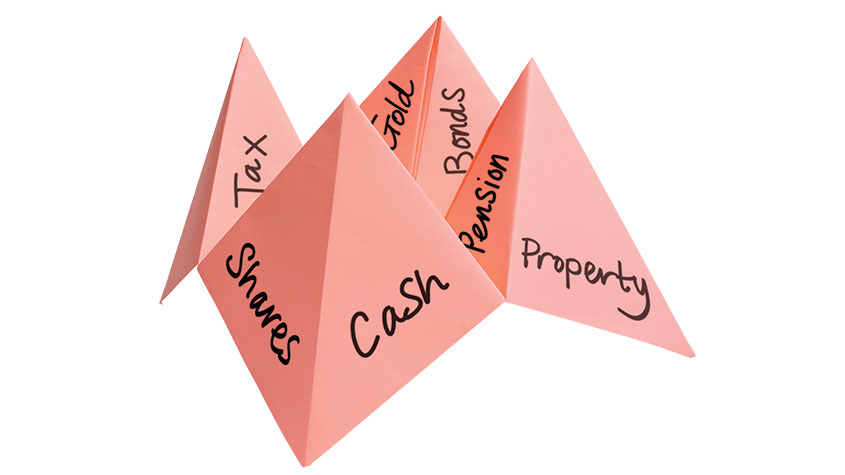How to protect your pension pot from market turmoil
The traditional way to protect your pension fund from market risk is to begin shifting your savings out of equities well ahead of retirement. But there are some problems with this approach, says David Prosser.


In days gone by, when the vast majority of savers used their entire pension fund to buy an annuity income at the point of retirement, planning to mitigate the risk of a last-minute collapse in the value of the fund was routine. That’s not necessarily the case today because the assumption is that most people prefer to generate retirement income through an income-drawdown plan, where the pension fund remains invested.
That assumption is not unreasonable. Income drawdown plans are now more popular than annuities. However, thousands of savers still buy annuities each year – and with annuity rates up by a fifth this year, that number looks set to rise. Even those who opt for drawdown plans early in retirement often purchase an annuity later on.
Moreover, this year’s volatility has been a reminder of the havoc stockmarkets can wreak on savers’ plans. US shares fell 20% during the first six months of the year; parts of the UK market suffered similar setbacks. If you began the year largely invested in equities and with plans to retire this summer based on an annuity purchase, the corrections will have come as quite a shock.
MoneyWeek
Subscribe to MoneyWeek today and get your first six magazine issues absolutely FREE

Sign up to Money Morning
Don't miss the latest investment and personal finances news, market analysis, plus money-saving tips with our free twice-daily newsletter
Don't miss the latest investment and personal finances news, market analysis, plus money-saving tips with our free twice-daily newsletter
The traditional way to head off risk is to begin shifting your pension fund saving out of equities well ahead of retirement. Many pension providers offer “lifestyle” investment strategies that automatically begin to move your money out of equities around ten years before your target retirement date. You then continue down this “glide path” until you have little or no exposure to equities – typically five years out from retirement.
Consider all your options
There are some problems with this approach. First, most lifestyle plans depend heavily on fixed-income assets. But in the current environment, where interest rates are expected to continue rising, a shift out of equities into bonds may be a case of jumping out of the fire and into the frying pan.
Furthermore, many savers who take out lifestyle plans set a retirement date when they first begin saving and then forget all about the arrangement. Their retirement date may change later on, but the plan proceeds on the basis of the original target. That may expose savers to too much risk if they now plan to retire earlier – or too little if they now expect to cash in their pension fund later.
For these reasons, a more bespoke approach to managing risk in the run-up to retirement makes sense. If an annuity is likely to figure in your retirement plans, it is a good idea to lock in some of the gains you’ve made on your pension savings, but there are many ways to do that in practice.
Shifting from equities to bonds feels too crude. A wide range of asset classes and investment strategies now offer good risk-management potential. For instance, infrastructure assets provide good inflation-proofing features and real estate has a role to play for many savers too. Multi-asset funds, including the “flexible” investment trusts that can invest across asset classes, may be a good option for many.
Also keep in mind that the choice between purchasing an annuity and income drawdown does not have to be a case of choosing either one or the other. There’s nothing to stop you using some of your pension fund to buy an annuity while investing the rest in a drawdown plan. That could be a good compromise, but you’ll need to think differently about each pot of savings ahead of time. If in doubt, take independent financial advice on pension saving. Even experienced investors struggle with managing risk effectively – and trying to maximise the value of your fund for a set point in time can be challenging.
Get the latest financial news, insights and expert analysis from our award-winning MoneyWeek team, to help you understand what really matters when it comes to your finances.

David Prosser is a regular MoneyWeek columnist, writing on small business and entrepreneurship, as well as pensions and other forms of tax-efficient savings and investments. David has been a financial journalist for almost 30 years, specialising initially in personal finance, and then in broader business coverage. He has worked for national newspaper groups including The Financial Times, The Guardian and Observer, Express Newspapers and, most recently, The Independent, where he served for more than three years as business editor.
-
 ‘Why I have ditched my Help to Buy ISA for cash savings and the stock market’
‘Why I have ditched my Help to Buy ISA for cash savings and the stock market’Without the 25% bonus, my Help to Buy ISA is effectively redundant, says MoneyWeek writer Sam Walker.
-
 Is your inheritance tax allowance cut if you sell to downsize or sell your home to pay for care?
Is your inheritance tax allowance cut if you sell to downsize or sell your home to pay for care?Downsizing relief is a little-known benefit that could save your loved ones tens of thousands of pounds in inheritance tax after you’ve died.
-
 Act now to bag NatWest-owned Ulster Bank's 5.2% easy access savings account
Act now to bag NatWest-owned Ulster Bank's 5.2% easy access savings accountUlster Bank is offering savers the chance to earn 5.2% on their cash savings, but you need to act fast as easy access rates are falling. We have all the details
-
 Moneybox raises market-leading cash ISA to 5%
Moneybox raises market-leading cash ISA to 5%Savings and investing app MoneyBox has boosted the rate on its cash ISA again, hiking it from 4.75% to 5% making it one of top rates. We have all the details.
-
 October NS&I Premium Bonds winners - check now to see what you won
October NS&I Premium Bonds winners - check now to see what you wonNS&I Premium Bonds holders can check now to see if they have won a prize this month. We explain how to check your premium bonds
-
 The best packaged bank accounts
The best packaged bank accountsAdvice Packaged bank accounts can offer great value with useful additional perks – but get it wrong and you could be out of pocket
-
 Bank of Baroda closes doors to UK retail banking
Bank of Baroda closes doors to UK retail bankingAfter almost 70 years of operating in the UK, one of India’s largest bank is shutting up shop in the UK retail banking market. We explain everything you need to know if you have savings or a current account with Bank of Baroda
-
 How to earn cashback on spending
How to earn cashback on spendingFrom credit cards and current accounts to cashback websites, there are plenty of ways to earn cashback on the money you spend
-
 John Lewis mulls buy now, pay later scheme
John Lewis mulls buy now, pay later schemeThe CEO of John Lewis has said the retailer will consider introducing buy now, pay later initiatives for lower-priced items.
-
 State pension triple lock at risk as cost balloons
State pension triple lock at risk as cost balloonsThe cost of the state pension triple lock could be far higher than expected due to record wage growth. Will the government keep the policy in place in 2024?